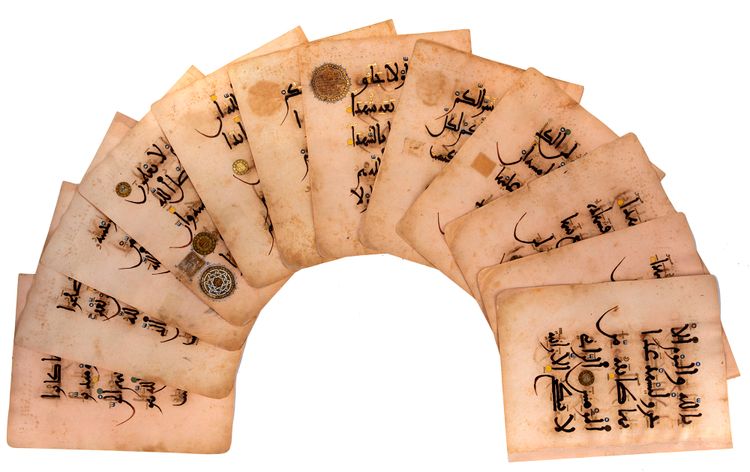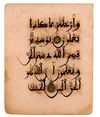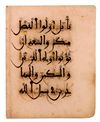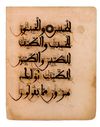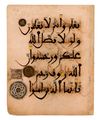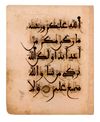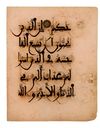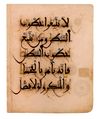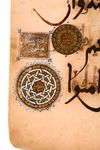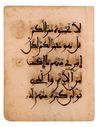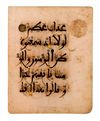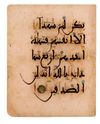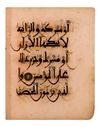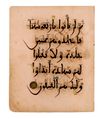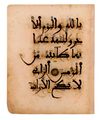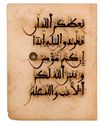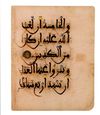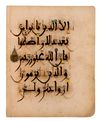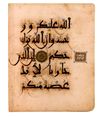A RARE ANDALUSIAN QURAN SECTION ON PINK PAPER, ANDALUSIA, 13TH CENTURY
An Arabic manuscript on thick polished pink paper, 12 folios, 5 lines to the page, written in large and bold Maghribi (Andalusi) script, vocalization in gold, letter pointing and vocalization in gold outlined in black, shadda and sukun in blue, yellow and green markers, single verse division marked with a gold illuminated roundel containing abjad letters in blue. Text: Quran 24 surah An-Nur, ‘The Light’, part of verse 2 to part of verse 26. 27 by 34 cm.
This is a fine example of Islamic manuscript production from the Muslim west, and the twenty-volume Quran from which this leaf originates is remarkable in many ways. It was written on paper, which in medieval Islamic Spain was unusual, vellum still being preferred material for the writing of the Quran; the paper was dyed pink, a rare luxury aspect; the script is a fine example of large scale Maghribi (the marking of the hamzas indicating a probable Andalusian origin) and the spacious arrangement of the script on the page allowed for the clear marking of the diacritics and vocalization in colors and gold and the elaborate illuminated devices between verses. A particularly unusual aspect of the verse divisions is the use of abjad letters to mark the exact verse count of every verse. The illumination of the devices marking the verse divisions is of every high quality and the size of the devices allows the use of a relatively complex design, as witnessed in the present example.
This is the only known Quran from Andalusia to be on pink paper. Scholars attribute this manuscript to be commissioned by one of the early sultans of the Nasirids (Bano Ahmar) ruling family which reigned between 1232-1492 AD. Abu al Ahmar or Mohammed the first declared himself as a sultan over Arjona in 1232, thereafter he concurred many cities to the south, including Granada, which was declared the capital of the Islamic Andalusian state in 1238 AD. The Alhambra castle is an exemplary of Bano Ahmar’s lavish art patronage, architecture and complex designs. The complete pink Quran must have been one of the most lavish Qurans at the time given the fact that it would take few thousand pages to be complete, it could possibly be commissioned either by Mohammed the first or his son. Mohammed the second as a symbol of divine authority to the ruling of the Bano Ahmar family.
A bifolium from the same manuscript is in The David Collection, Copenhagen. Folios from this manuscript were sold in Sothebys London on 14 April 1976, lot 247. A bifolia was sold on, 3 October 2012, Lot 17 and 6 April 2011, The Stuart Cary Welch Collection, Part One, lot 11; whilst single leaves were sold 8 October 2014, lot 13; 22 April 2015, lot 51 and 7 October 2015, lot 204. Also lot 136 on April 26th 2012 in Christies London.
